Column: Hall of Fame jockey Victor Espinoza, his body broken by one fateful fall, is holding on for dear life
The Hall of Fame jockey is riding a hard-back dining room chair, the only one in his house his broken body can navigate.
His weakened hands are clutching invisible reins, grabbing at the air, again and again.
His head is motionless because of a neck brace, but his eyes are moving, filling, brimming with tears.
âOne minute, Iâm winning the Triple Crown,ââ Victor Espinoza says softly. âThe next minute, I canât feed myself.ââ
The spacious Del Mar home is quiet. The room with the shiny silver trophies is darkened. A mechanical horse no longer creaks.
This is a peek beyond the silk. This is the other side of the roses. This is where the ride ends, and reality begins.
On a July Sunday morning at the famed seaside Del Mar race track, Espinoza was riding Bobby Abu Dhabi in a workout when their worlds literally disappeared from underneath them.
Bobby Abu Dhabi suddenly collapsed of an apparent heart attack. Espinoza suddenly found himself riding on air.
The giant horse immediately died. The 5-foot-1, 112-pound man flew into the dirt and broke his neck.
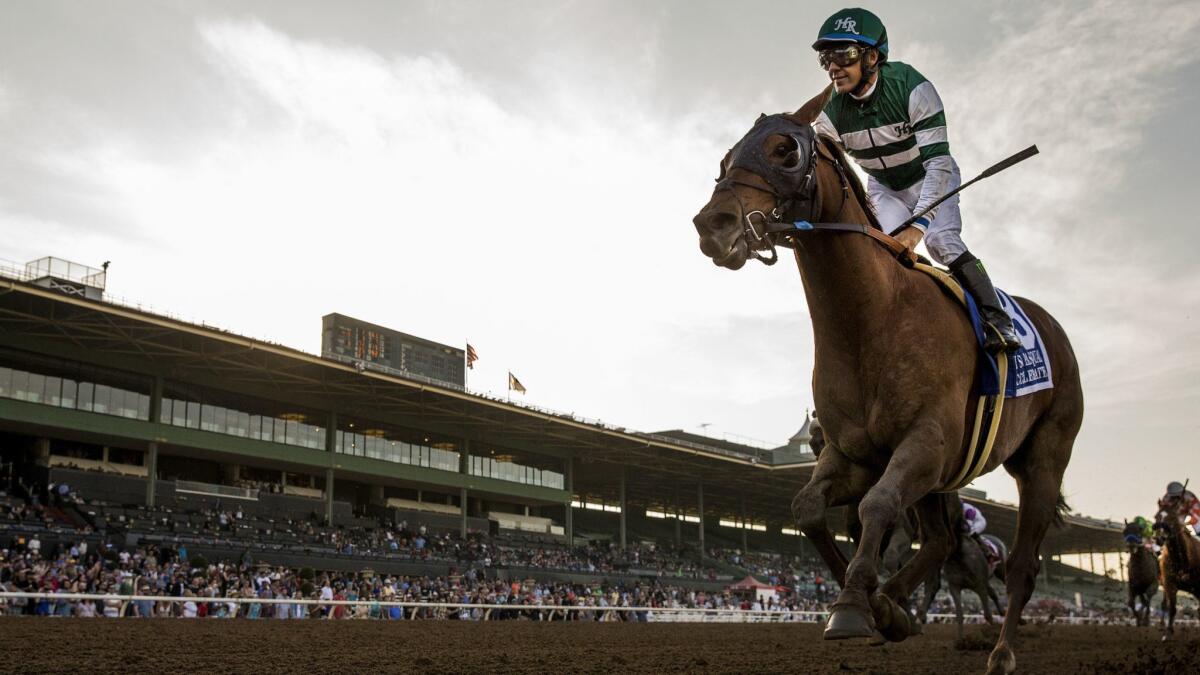
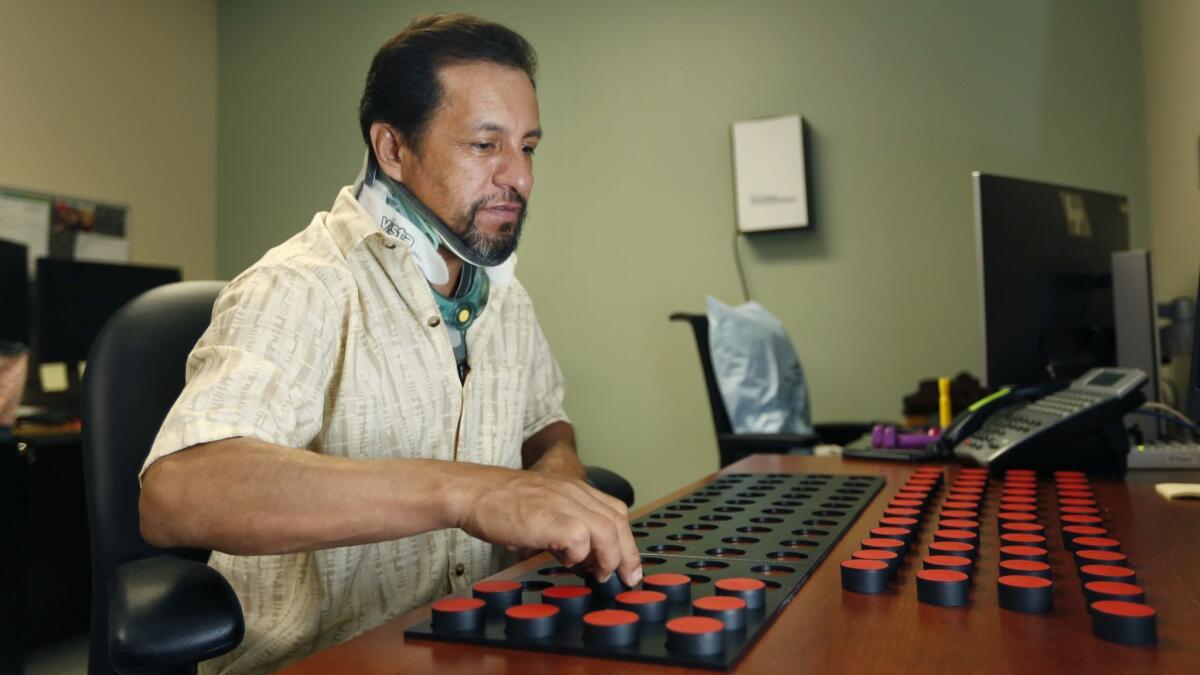
Espinoza was initially paralyzed. He has since regained feeling in everything except his left arm, yet his mobility is greatly limited and his muscles are wracked with uncertainty.
He requires a 24-hour caregiver to help him get out of bed, dress and bathe. He can walk, but not always steadily. He can feed himself, but slowly, and mostly with one hand. He is getting stronger every day, but remains confined to the neck brace and experiences occasional bouts of searing pain.
âYour body has to reset itself, to learn how to do everything all over again,ââ says Espinoza, 46. âItâs the toughest thing Iâve ever done in my life.â
He plans on riding again but says he canât even think about it right now. He spends his days away from the track where he once won seven races in one day, fighting through the isolation of physical therapy and mental frustration.
âWhat happened to Victor is the thing we fear the most,ââ says fellow Hall of Fame jockey Gary Stevens, who has visited Espinoza. âA spinal injury. Somebody who might not be returning to the saddle. Itâs a real eye-opener.ââ
That fear lives daily with Espinoza, and he discussed it openly in a recent 90-minute interview in his home. The usually clean-shaven athlete, once glamorous enough to appear on âDancing With The Stars,ââ was sporting a scraggly goatee because he cannot shave. His hair is growing long because he cannot remove his neck brace for a trim.
He spent most of the interview sitting in that hard-back chair, but at the end of the conversation, he summoned caregiver Rosie Aponte to accompany him on a slow trek up a set of stairs to a glistening souvenir sitting in a glass case.
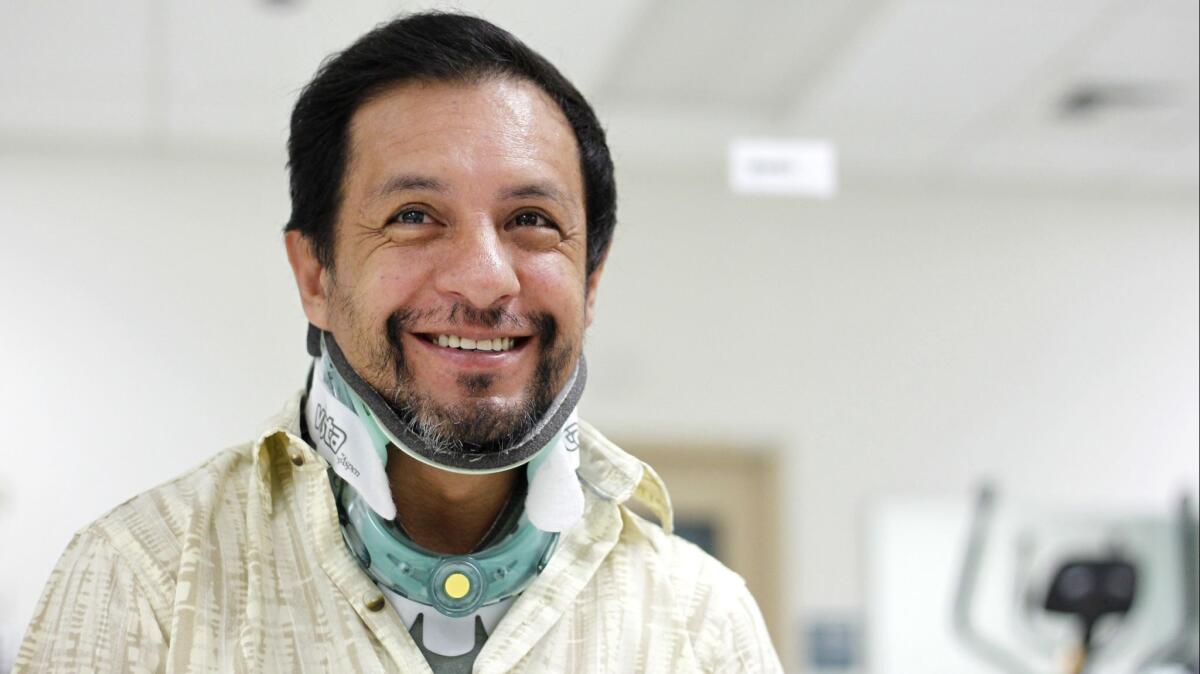
He wanted to show his visitor the brown leather and black-cushioned saddle that he used to ride American Pharoah to victory in the 2015 Kentucky Derby, Preakness and Belmont Stakes, resulting in racingâs first Triple Crown winner in 37 years.
âI was once a champion,ââ he says. âBut when we ride the horses, there is a reason we are followed by an ambulance.ââ
::
To outsiders, it sounds absurd, this idea that a legendary jockey would climb out of bed on a Sunday morning to ride a horse for practice, for free.
Why on earth would a guy like Espinoza, who has been aboard winners in seven Triple Crown races, with more than 3,300 career victories, do that?
Turns out, itâs part of the game. Trainers value a jockeyâs input on certain stakes horses, and if those jockeys value their mounts, they will come when called.
âThatâs part of our job; thatâs just what we do,ââ Espinoza says, and so on that third Sunday in July, he hustled across the highway to work out Bobby Abu Dhabi as a favor to trainer Peter Miller.
Espinoza had ridden the 4-year-old in his previous four races, twice finishing first, and was going to race in the following weekendâs Bing Crosby Stakes. When he saddled Bobby Abu Dhabi that morning, he hugged him like an old friend and whispered into his mane.
âYou take care of me, I take care of you.ââ
It is the same thing he whispers to all of the horses he rides, horses with whom he believes he shares a heart. Since riding everything from donkeys to sheep to bulls while growing up as the 11th of 12 children on a farm in Hidalgo, Mexico, he has shared this feeling with everything he has saddled.
He so badly wanted to ride horses for a living, he paid for jockey school by driving a bus in Mexico City. Today he still views his job as a privilege, and his role as a caretaker.
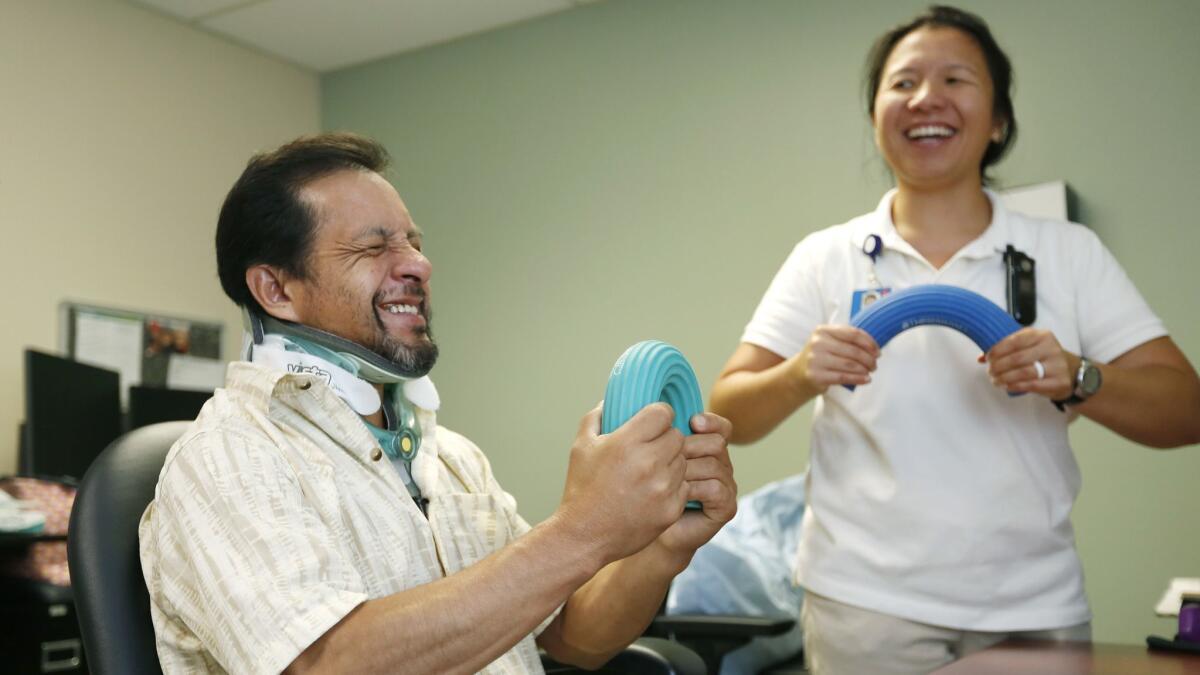
âTheyâre like humans. Itâs my job to take care of them. Itâs just me and the horse; only us, together,ââ he says. âThe horses know. They have confidence in me. They know I will never let anything bad happen to them.ââ
But then, several long strides before the finish line at the end of that Sunday morning workout, the bottom dropped out.
âMy horse disappeared from under me,ââ Espinoza says. âGone. Just like that. Gone.ââ
Espinoza has twice broken his hand and arm from falls, but both times he had a few seconds of warning from a stumbling. Not this time. This horse didnât stumble, it crumbled.
âIn 30 years of training, Iâve never had one fall like that,ââ Miller said. âIâve never seen anything like it.ââ
Espinoza never saw the horse again. He crashed into the track and wound up on his back, covered in dirt, unable to brush it off.
âI couldnât feel anything; the paramedics even had to get the dirt off my face,ââ he recalls. âThen I saw the look in their eyes and I said, âOh no.âââ
His mind flashed to memories of paralyzed jockeys visiting the backstretch. He thought of another Triple Crown jockey, Ron Turcotte, the rider of the great Secretariat who is a paraplegic after being injured in a fall in 1978.
âI thought, Iâm being paralyzed. My mind is going crazy, thinking a lot of crazy things,ââ he says. âIn my mind I see all the wheelchairs around the barns. I was so scared. I saw was like, why does this happen to me?ââ
After all, it is Espinoza who is usually helping the afflicted, as he donates 10 percent of his winnings to City of Hope. It is Espinoza who seemed invincible in winning a remarkable five out of six Triple Crown races in 2014 and 2015.
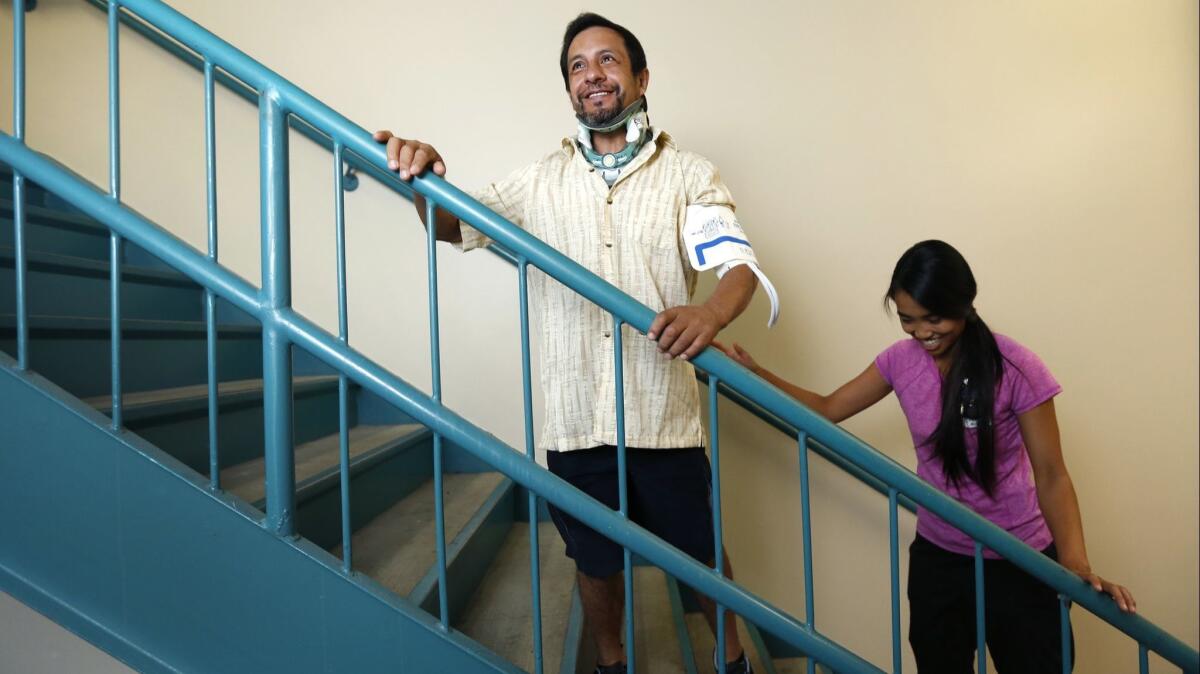
âHeâs a big-race rider,ââ Miller said. âHeâs got ice water in his veins.ââ
On that Sunday morning last month, Espinoza simply prayed for feeling in his limbs. He got it back, slowly, the right leg coming to life in the ambulance, the left leg moving at the Scripps Memorial Hospital in La Jolla, where he was diagnosed with a fracture of his c3 vertebrae in his neck.
He still couldnât move his left arm. Doctors initially thought he had suffered a stroke. A day later, as he was being fed vanilla pudding, it finally sunk in, and he began to cry.
âI thought, I ride all these horses like it was nothing, and now look at me,ââ he says.
He also began mourning the loss of Bobby Abu Dhabi, his teammate who was gone before he knew it.
âI cannot save that horse, and I cry for that,ââ Espinoza says. âI sat on that powerful animal, felt its speed, such a beautiful thing, and it falls, and I couldnât do anything to help it, and that hurts.ââ
During his third of 12 days in a hospital and rehabilitation center, his attitude began to brighten when the first trainer visited him. It was â who else? â Bob Baffert.
It was Baffert who worked with Espinoza as American Pharoahâs trainer. It was Baffert who wanted Espinoza to know how much his bravery was appreciated.
âWe forget these jockeys are laying their lives on the line for us every day,ââ Baffert said. âThere is nothing worse when you see something happen to them. All the fun and excitement ends. It changes the way you look at everything.ââ
Espinoza hopes his story can change the way the world looks at jockeys, and understand how quickly they can go from the winnerâs circle to the arms of a caregiver helping them get out of bed in the middle of the night to use the bathroom.
âOur lives, our dangers, they are real; they are no joke,ââ he says. âPeople should know, this is what we risk every time we get on a horse.ââ
The interview complete, Espinoza graciously stands up and begins slowly walking his visitor toward the front door. He passes walls of beautifully framed memorabilia, championship silks and photos everywhere. He canât turn his neck to see them. He keeps walking as if they arenât even there.
Get more of Bill Plaschkeâs work and follow him on Twitter @BillPlaschke
More to Read
Go beyond the scoreboard
Get the latest on L.A.'s teams in the daily Sports Report newsletter.
You may occasionally receive promotional content from the Los Angeles Times.











